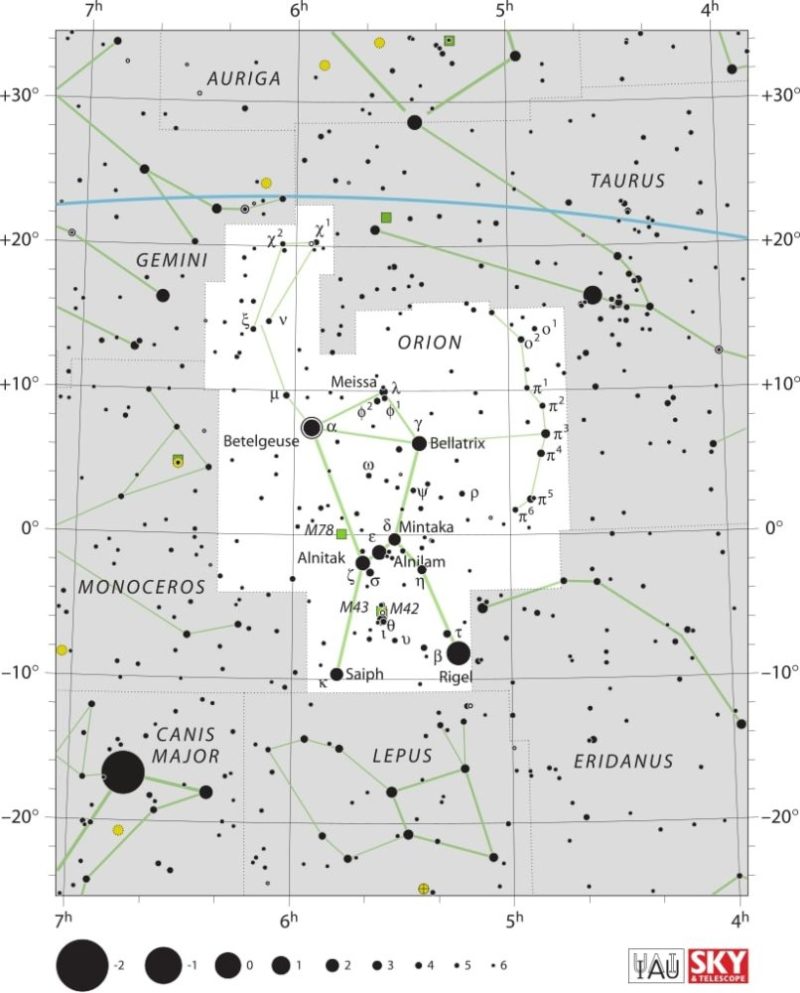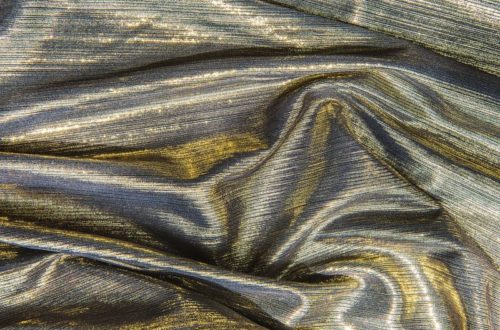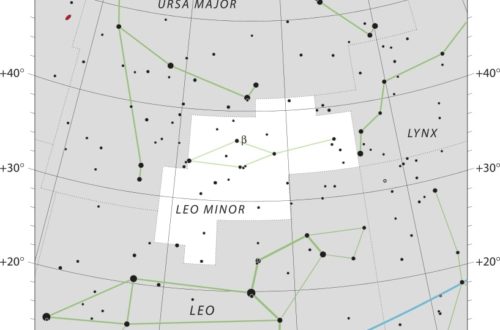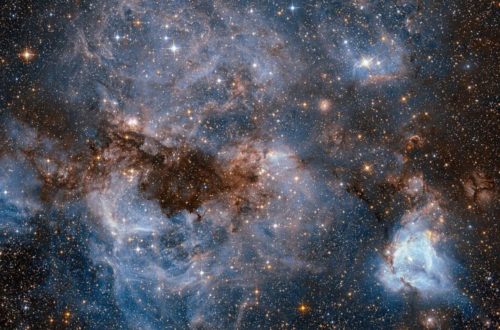Orionid Meteor Shower Guide

The Orionids are one of the most beautiful and best meteor showers, gracing our skies every October. Famous for their swift and brilliant meteors, Orionids can leave beautiful long-lasting glowing trails. The meteors originate from particles released by Halley’s Comet, vaporizing as they enter Earth’s atmosphere.
The shower’s name comes from the fact that these meteors appear to originate from the direction of the constellation Orion. On a good night, meteor watchers will see around 15 meteors per hour.
Regardless of how many Orionids you’re able to catch, the meteors provide a wonderful opportunity for anyone to witness an otherworldly light display each autumn. Our upcoming sections explain how to best view and what you can expect from this great event.
What Are the Orionids Exactly?
This spectacular event enchants casual skywatchers and seasoned astronomers alike. Their period of activity is from October 2 to November 7, but peak activity typically occurs around October 22. At the peak of this shower, observers can see up to 15 meteors per hour in dark skies.
The Orionids are among the most beautiful and widely watched celestial events every year. They offer an impressive, predictable display that anyone can enjoy under a dark sky.
Defining The Orionid Meteor Shower
The Orionid meteor shower has characteristics that make it particularly easy to identify and recognize. The meteors are some of the fastest and produce some of the most brilliant, sometimes colorful, trails. The terrific Orionids put on a show for all to see.
They are best viewed in the Northern Hemisphere, but are observable in the Southern Hemisphere as well. Their radiant point is bright and easy to spot in the constellation of Orion. This provides them with very wide visibility, with them soaring high into the sky for almost all locations on Earth.
Their predictable return each year has made the Orionids a reliable subject for both amateur and professional studies.
Halley’s Comet: The Dusty Parent
Each Orionid meteor you see is a small fragment of Halley’s Comet. That means the comet orbits the sun once every 75 to 77 years. As it travels, it creates a path of debris made up of dust and rock.
When Earth passes through this path, some of those particles get pulled into our atmosphere and burn up, forming the Orionids.
The last time we saw Halley’s Comet in the night sky was 1986, and it won’t return again until 2061. Even at a distance, the comet’s leftover debris makes for an awesome annual display. This spectacular yearly show never fails to amaze viewers and astronomers around the world.
Why They Appear Annually
Meteor showers, such as the Orionids, occur annually due to the orbit of the Earth around the Sun. Every October, our planet’s path intersects with the densest part of the stream of debris Halley’s Comet has left behind.
This intersection is so regular and predictable that the Orionids are one of the annual meteor showers. The shower’s peak timing lines up perfectly with when Earth crosses through the thickest part of the debris stream.
Fast Meteors, Bright Trails
Orionid meteors are some of the fastest meteors out there. They travel at an average speed of 66 kilometers per second Their high speed means they burn up very quickly and glow brightly, making them some of the most brilliant streaks in the sky.
A good number of meteors leave persistent trains—faint glowing trails that can linger for a few seconds after the meteor itself disappears. It’s this speed and brilliance that makes the Orionid meteor shower so spectacular to observe.
It’s little surprise that they’re one of the most popular meteor showers with sky watchers.
The Radiant Near Orion Explained
The radiant of the Orionids lies within the famous constellation Orion, a familiar sight in the fall and winter skies. More precisely, it is located to the north of Orion’s best known star, Betelgeuse.
The position of the radiant helps give people viewing the Orionids some direction on where to look. Meteors can appear in any portion of the sky. Nevertheless, reversing their course back will take you to Orion’s home, so this constellation is a helpful guide for locating the shower.
Catching the Orionid Meteor Shower
Looking to catch one of the year’s most reliable meteor showers? This event is unique for its wide visibility and the possibility of very bright fireballs.
A little preparation could be the difference between a casual glance and a dedicated evening of meteor watching. Understanding the ideal dates, times, and weather conditions will go a long way towards making your experience outdoors more smooth and rewarding.
Mark Your Calendar: Peak Date
The Orionid meteor shower will peak on October 22, 2025. This date is important because the meteor activity peaks around this date, leaving a small window of opportunity to view the shower.
Even though the shower lasts from October 2 to November 7, the peak night is when you’ll see the most meteors.
Marking this date on your calendar now ensures you have the time to plan, particularly if you’ll need to travel to a darker sky site.
Expected Activity Levels
As many as 15 meteors per hour could be observed at the peak. This rate is contingent on having clear skies and being in a very dark site.
Weather, moonlight, and the altitude of the radiant all affect meteor counts. The Orionids are well-known for the occasional bright fireball, which makes the display even more spectacular.
Keeping track of the forecasts leading up to the event will help manage expectations and allow you to prepare for the best night possible.
Best Practices for Stargazing Success
If you’re hoping to see the Orionid meteor shower, you’ll need to plan in advance. These meteor shower tips will help you make the most of a little planning. Stargazing is incredibly rewarding, but it requires some advance planning, comfort preparation, and a little bit of patience.
Escape City Lights: Find Darkness
To experience the Orionids in all their glory, dark skies are essential. If you’re watching in an area affected by light pollution, it washes out faint meteors and dims the experience considerably.
The Bortle scale offers a consistent way to determine how dark a site is. It goes from class 1, or the darkest rural skies, to 9, or the most illuminated city centers. Residents in and around Los Angeles and many other metropolitan areas will experience a class of 7 or above. This results in only the brightest meteors making it through to reach them to be seen for their viewing delight.
For the full experience, select a location with a Bortle rating of 3 or lower. State and national parks are popular destinations for stargazers and nature lovers.
Even just getting to public lands far from major highways can have a huge impact. Properly planning a trip to these locations will greatly increase your chances of witnessing a higher number of meteors. This endeavor usually gifts you with a sky sparkling with countless stars.
Give Your Eyes Time Adjust
Give your eyes time to adjust. Your eyes will need a few minutes to adjust to the dark if you hope to see the faint meteors. This adaptation process is not instantaneous and takes at least 20 minutes.
Any exposure to bright light will reset your eyes’ adaptation to night vision. Just looking at a phone screen or car headlights reduces what you can see significantly. This way, you can use a red flashlight, which will better preserve your night vision.
It provides just enough light to inspect your equipment or navigate without losing your night vision. As you spend more time in the dark, your eyes adjust. You’ll begin to see dimmer and fainter meteors, changing what were a few sightings into many dozens over the course of the night.
Comfort is Key: What to Bring
Stargazing can be a bit of a waiting game, and that’s especially true on chilly fall evenings. Warm layers are key, as it can get cold quickly after midnight. A thick blanket or a sleeping bag will help you stay warm.
Lightweight camping chairs or reclining loungers will help make long stargazing sessions more enjoyable and comfortable. Pack snacks, a thermos of coffee or hot chocolate, and hydrate well. These basics will make sure you’re equipped to settle in for the long haul!
If you’re planning on taking long-exposure photos or using a telescope, be sure to pack along a solid tripod. A solid surface is important to getting sharp shots.
Be ready for high winds or rapid temperature changes! A second layer or rain shell is always a good plan.
Patience: The Stargazer’s Virtue
Meteor showers aren’t like trains with an established timetable. Even at the peak of the Orionids, meteors will come in short flurries or long stretches.
One of the most useful tools you have is your patience. Often the best viewing times are after midnight and well before dawn.
When things are busy, take advantage of quiet moments to appreciate the beauty and serenity of being outside at night. The Orionids offer you a lot more than just some meteors dancing across the sky. They provide you an opportunity to find respite from the everyday cacophony and experience the sky at its best.
Conclusion
The Orionids are one of the most spectacular showers of the year, and one of the fastest with fast, colorful meteors zipping across the sky.
For some, being present is a way to just soak in the experience with loved ones. Even first-timers can make a real contribution to tracking shooting stars for science and learn in the process. The Orionids are more than just an excuse for a brief gaze skyward—they unite millions of people.
Looking for a more authentic experience under the stars? Grab a blanket, spread it on the ground, and join the party. Post your discoveries or simply exchange tales with your crew.
Frequently Asked Questions
What are the Orionids?
The Orionids are one of the most popular meteor showers to grace our skies each October. They originate from debris left behind by Halley’s Comet. As with most meteor showers, the meteors appear to radiate from one constellation—in this case, the Orion constellation.
When is the best time to see the Orionids?
Peak viewing typically occurs on October 22. As with most meteor showers, the best time is after midnight, when the sky is darkest and Orion is highest.
How many meteors can I expect to see during the Orionids?
At peak activity, you should see 15 meteors per hour. Look for the darkest, clearest skies possible, away from city lights to have the best chance at seeing meteors!
Do I need special equipment to see the Orionids?
The only thing you need to bring is a blanket or reclining lawn chair. Give your eyes time to adjust to the darkness for at least 20 minutes.
What causes the Orionid meteors?
The meteors themselves are just very small bits of Halley’s Comet vaporizing as they zip into our atmosphere at 66 km/s.
See also:
- Previous meteor shower: Epsilon Geminid Meteor Shower
- Next meteor shower: Leonis Minorid Meteor Shower
Would you like to receive similar articles by email?





